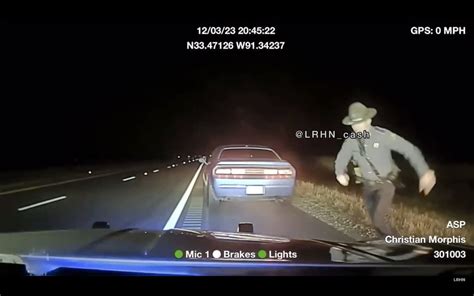
Tesla owners, facing concerns over electronic door malfunctions that could trap occupants, are installing aftermarket “rip cords” to manually open doors in emergency situations, circumventing the vehicles’ electronic systems.
Amid rising apprehension about being locked inside Tesla vehicles due to electrical failures or submerged conditions, a growing number of owners are resorting to installing manual door release mechanisms, often referred to as “rip cords” or cable-pull systems. These modifications provide a mechanical override to the electronic door latches, enabling occupants to escape in scenarios where the standard electronic releases are non-functional. This trend highlights a perceived gap in Tesla’s safety design and underscores the lengths to which owners are willing to go to ensure their personal safety.
The core issue revolves around Tesla’s reliance on electronic systems for door operation. In standard operation, occupants press a button to signal the door to open, which then triggers an electronic latch release. However, in situations where the vehicle’s electrical system is compromised—such as after an accident that damages the battery or in cases of submersion where the electronics short circuit—these electronic releases may fail, potentially trapping individuals inside. Tesla vehicles do have a mechanical door release, but its location and operation are not always intuitive, particularly in emergency scenarios or for those unfamiliar with the vehicle.
“That mechanical release is not always obvious,” notes one safety advocate who has been tracking the trend. “In a panic situation, people are going to look for something familiar, something that they can instinctively grab and pull.” The aftermarket rip cords address this concern by providing a readily accessible and easily identifiable manual release mechanism. These systems typically involve a cable connected directly to the door latch, allowing occupants to physically disengage the latch and open the door, bypassing the electronic system altogether.
Several incidents and anecdotal reports have fueled the rise in popularity of these aftermarket solutions. While there are no official statistics on incidents involving trapped occupants in Teslas due to electronic door failures, online forums and social media groups dedicated to Tesla ownership are replete with discussions and shared experiences related to this concern. Some owners cite instances where the electronic releases malfunctioned, requiring them to use the less-obvious mechanical release or, in extreme cases, to break a window to escape.
The installation of rip cords is not without its complexities. Owners must carefully route the cable to avoid interfering with other vehicle systems, and the installation process can vary depending on the Tesla model and the specific aftermarket kit being used. Some owners opt for professional installation to ensure the system is properly installed and functions reliably. Moreover, there are potential warranty implications to consider when modifying a vehicle, as Tesla could potentially deny warranty claims related to any issues that arise as a result of the aftermarket installation.
Despite these challenges, the demand for rip cords continues to grow, driven by a desire for enhanced safety and peace of mind. Several aftermarket companies now offer kits specifically designed for Tesla vehicles, catering to this growing market. These kits typically include the necessary cables, mounting hardware, and instructions for installation. The prices for these kits range from a few hundred dollars to upwards of a thousand dollars, depending on the complexity of the system and the level of professional installation required.
Tesla has addressed the concerns surrounding door operation in emergency situations in its vehicle manuals and through training materials for first responders. The company emphasizes the presence of the mechanical door release and provides instructions on its use. Tesla also equips its vehicles with a low-voltage auxiliary battery that is designed to power the door releases even if the main battery is depleted. However, critics argue that these measures are insufficient and that a more intuitive and readily accessible manual release mechanism should be a standard feature in all electric vehicles.
The controversy surrounding Tesla’s door release mechanisms highlights a broader debate about the safety of electric vehicles and the potential risks associated with their reliance on electronic systems. As electric vehicle adoption continues to grow, it is crucial for manufacturers to prioritize safety and to address concerns about potential system failures. The installation of aftermarket rip cords by Tesla owners serves as a reminder that even advanced technology cannot completely eliminate the need for basic safety features and manual overrides. It also underscores the importance of clear and accessible information for occupants on how to operate vehicle safety systems in emergency situations.
The trend of Tesla owners installing rip cords also raises questions about regulatory oversight and the role of government agencies in ensuring the safety of electric vehicles. While vehicles undergo rigorous testing and certification processes before being sold to the public, these processes may not always adequately address the potential risks associated with complex electronic systems. Consumer advocacy groups have called for stricter regulations and more comprehensive testing to ensure that electric vehicles meet the highest safety standards.
The issue of emergency egress from electric vehicles is not unique to Tesla. Other electric vehicle manufacturers also rely on electronic door release systems, and similar concerns have been raised about the potential for these systems to fail in emergency situations. As the electric vehicle market continues to evolve, it is essential for the industry as a whole to address these concerns and to develop safer and more reliable door release mechanisms. This includes exploring alternative designs, improving the reliability of electronic systems, and providing clear and intuitive instructions for occupants on how to operate vehicle safety features. The development of standardized emergency release mechanisms across all electric vehicles would also help to alleviate confusion and improve safety in emergency situations.
Furthermore, this situation exemplifies the “Right to Repair” movement, which advocates for consumers’ rights to repair their own electronics and devices. Tesla has historically restricted access to parts, software, and diagnostic tools, making it difficult for independent repair shops and owners to perform repairs. The installation of rip cords can be seen as a form of consumer empowerment, where owners are taking matters into their own hands to address a perceived safety deficiency. This case adds to the growing pressure on manufacturers to provide greater transparency and access to repair resources.
Looking ahead, it is likely that the debate surrounding Tesla’s door release mechanisms will continue, and that more Tesla owners will opt to install aftermarket rip cords as a precautionary measure. Tesla may respond to these concerns by redesigning its door release system to incorporate a more intuitive and readily accessible manual release mechanism, or by enhancing the reliability of its electronic systems. Regardless of how Tesla chooses to address this issue, the trend of owners installing rip cords serves as a valuable lesson about the importance of safety, reliability, and consumer empowerment in the age of electric vehicles. The incident also sheds light on the need for car manufacturers to be more transparent about the safety features of their vehicles, and how to use them in emergency cases.
The evolving narrative of Tesla owners implementing rip cords reveals a dynamic interplay between technological advancement and fundamental safety expectations. The story isn’t merely about individual modifications; it reflects a broader discourse on the responsibilities of automakers, the resilience of consumers, and the ever-present need to balance innovation with tried-and-true safety measures.
The decision to install rip cords represents a proactive approach by Tesla owners who are not willing to solely rely on the electronic systems of their vehicles. This highlights a sense of self-reliance and a willingness to take personal responsibility for their safety and the safety of their passengers. It also demonstrates the power of online communities and the ability of owners to share information and solutions to common concerns. The ease of access to information and the availability of aftermarket solutions have empowered Tesla owners to address this perceived safety gap.
The installation of rip cords is not just about escaping a vehicle in an emergency situation; it is also about peace of mind. Knowing that there is a readily available manual release mechanism can alleviate anxiety and provide a sense of control in potentially dangerous situations. This is particularly important for owners who frequently drive in areas where there is a higher risk of accidents or submersion, or for those who have passengers with mobility issues or disabilities.
The broader implications of this trend extend beyond Tesla and the electric vehicle market. It raises questions about the design and safety of all vehicles, particularly those that rely heavily on electronic systems. As vehicles become increasingly complex and automated, it is essential to ensure that basic safety features are not compromised. The availability of manual overrides and redundant systems can provide a crucial safeguard in the event of system failures.
In conclusion, the trend of Tesla owners installing rip cords is a complex issue with multiple facets. It highlights concerns about the safety of electronic door release mechanisms, the importance of clear and accessible information for occupants, and the role of consumer empowerment in addressing perceived safety deficiencies. As the electric vehicle market continues to grow, it is essential for manufacturers, regulators, and consumers to work together to ensure that all vehicles meet the highest safety standards. The ongoing discussion and the proactive measures taken by Tesla owners serve as a valuable reminder of the importance of prioritizing safety in the design and operation of vehicles. This commitment to safety must extend beyond technological innovation and encompass a holistic approach that considers the needs and concerns of all stakeholders.
Frequently Asked Questions (FAQ)
1. Why are Tesla owners installing rip cords in their vehicles?
Tesla owners are installing rip cords (manual door release mechanisms) due to concerns about the reliability of the electronic door release systems in emergency situations, such as after an accident or in the event of submersion. They fear being trapped inside the vehicle if the electronic systems fail. As the original article stated, “Tesla owners adding emergency rip cords because they’re worried about getting trapped inside”.
2. How do these aftermarket rip cord systems work?
Aftermarket rip cord systems typically consist of a cable connected directly to the door latch mechanism. When pulled, the cable manually disengages the latch, allowing the door to open regardless of whether the electronic system is functioning. They bypass the vehicle’s electronic system and provide a mechanical means of opening the door.
3. Does Tesla have a manual door release?
Yes, Tesla vehicles do have a mechanical door release. However, its location and operation are not always intuitive, especially in emergency situations. According to the original article, “That mechanical release is not always obvious,” notes one safety advocate who has been tracking the trend. “In a panic situation, people are going to look for something familiar, something that they can instinctively grab and pull.”
4. What are the potential risks or downsides of installing a rip cord?
Potential risks include improper installation that could interfere with other vehicle systems, and possible warranty implications, where Tesla might deny claims related to issues arising from the modification. The original source infers this by stating that “There are potential warranty implications to consider when modifying a vehicle, as Tesla could potentially deny warranty claims related to any issues that arise as a result of the aftermarket installation.”
5. Has Tesla addressed the concerns about electronic door releases?
Yes, Tesla has addressed these concerns in its vehicle manuals and through training materials for first responders. They emphasize the existence of the mechanical door release and provide instructions on its use. Tesla also uses a low-voltage auxiliary battery to power the door releases even when the main battery has depleted.
6. Are all Tesla models affected by this concern?
While the concern about electronic door release systems applies to all Tesla models that rely on this technology, the specific design and location of the mechanical release may vary slightly between models. The effectiveness and ease of installation of aftermarket rip cord systems can also vary depending on the model.
7. How much does it cost to install a rip cord in a Tesla?
The cost of installing a rip cord can vary depending on the specific kit and whether professional installation is required. Kits can range from a few hundred dollars to upwards of a thousand dollars, including installation.
8. Are other electric vehicle manufacturers using similar electronic door release systems?
Yes, other electric vehicle manufacturers also use electronic door release systems, and similar concerns have been raised about their potential failure in emergency situations. This is a broader issue within the electric vehicle industry.
9. What is the “Right to Repair” movement, and how does it relate to this issue?
The “Right to Repair” movement advocates for consumers’ rights to repair their own electronics and devices, including vehicles. It is relevant because Tesla has historically restricted access to parts, software, and diagnostic tools, making it difficult for independent repair shops and owners to perform repairs. The installation of rip cords can be seen as a form of consumer empowerment in response to these restrictions.
10. What should I do if I am concerned about the door release system in my Tesla?
If you are concerned about the door release system in your Tesla, you should familiarize yourself with the location and operation of the mechanical door release. You can also consider installing an aftermarket rip cord system for added peace of mind. Additionally, you should ensure that you and your passengers are aware of the emergency procedures for exiting the vehicle.
11. What are some real-world scenarios where a rip cord could be useful?
A rip cord could be useful in several real-world scenarios, including:
- Vehicle Submersion: If a Tesla becomes submerged in water, the electrical system may short circuit, rendering the electronic door releases inoperable. A rip cord would allow occupants to manually open the doors and escape.
- Post-Accident Electrical Failure: After a collision, the vehicle’s battery or electrical system may be damaged, preventing the electronic door releases from functioning.
- Electronic Malfunction: In rare cases, the electronic door releases may malfunction due to a software glitch or other electronic failure, trapping occupants inside.
- Power Outage: Although Teslas have auxiliary batteries, in rare scenarios, both batteries could fail, meaning no electronic functionality will operate.
12. How has Tesla responded to the growing demand for rip cords?
While Tesla has not officially endorsed or discouraged the installation of rip cords, they have emphasized the presence of the mechanical door release in their vehicle manuals and training materials for first responders. They have also highlighted the role of the low-voltage auxiliary battery in powering the door releases in emergency situations. However, they have not made any significant changes to the door release system design in response to the growing demand for rip cords.
13. Is it legal to install a rip cord in my Tesla?
Installing a rip cord in your Tesla is generally legal, as long as the installation does not violate any local laws or regulations regarding vehicle modifications. However, it is important to ensure that the installation is performed correctly and does not compromise the safety or functionality of other vehicle systems.
14. Are there any alternatives to installing a rip cord?
Yes, alternatives to installing a rip cord include:
- Familiarizing yourself with the mechanical door release: Understanding how to locate and operate the mechanical door release can provide a backup option in emergency situations.
- Carrying a window breaker: A window breaker is a small tool that can be used to quickly break a vehicle window in order to escape.
- Maintaining situational awareness: Being aware of your surroundings and potential hazards can help you to avoid situations where you might need to use an emergency release mechanism.
15. What are the long-term implications of this trend for the electric vehicle industry?
The trend of Tesla owners installing rip cords could have several long-term implications for the electric vehicle industry, including:
- Increased scrutiny of electronic door release systems: Regulators and consumer advocacy groups may increase their scrutiny of electronic door release systems in electric vehicles, potentially leading to stricter safety standards.
- Adoption of more robust safety features: Electric vehicle manufacturers may be more likely to adopt more robust safety features, such as redundant release mechanisms and improved battery protection.
- Greater transparency and access to repair information: The “Right to Repair” movement may gain momentum, leading to greater transparency and access to repair information for electric vehicles.
- Shift in consumer perceptions of electric vehicle safety: The perception of electric vehicles as being inherently safe may be challenged, leading to a greater emphasis on safety features and emergency preparedness.
- Standardization of Emergency Release Mechanisms: This may lead to the standardization of emergency release mechanisms across all electric vehicles to help avoid confusion.
16. How does this impact insurance liabilities?
The aftermarket installations could potentially introduce complexities in insurance claim scenarios following accidents. If an accident is directly linked to the aftermarket device, or the device prevents proper rescue attempts, insurance adjusters might scrutinize the modifications closely.
17. What role do social media and online forums play in this trend?
Social media and online forums play a critical role in amplifying awareness and facilitating the sharing of solutions like rip cords. They serve as platforms where Tesla owners exchange experiences, discuss safety concerns, and coordinate group buys of aftermarket products. They also act as a check on the company and increase community awareness.
18. What are some potential design solutions Tesla (or other EV makers) could implement?
Potential design solutions include:
- Redundant Mechanical Release: A more easily accessible and intuitively designed mechanical release system.
- Automatic Door Unlocking on Impact: Systems that automatically unlock doors and lower windows upon detecting a collision.
- Improved Battery Protection: Reinforcing battery packs to minimize the risk of electrical system failures in accidents.
- Emergency Power Backup: Dedicated backup power sources specifically for safety-critical systems like door releases.
19. How does this relate to autonomous driving systems?
As vehicles become increasingly autonomous, the reliability of electronic systems becomes even more critical. If a vehicle is driving itself, occupants may be less able to react quickly in an emergency situation, making it even more important to have reliable backup systems like manual door releases.
20. What is the overall message or takeaway from this situation?
The overall message is that while electric vehicles offer many advantages, it is important to prioritize safety and ensure that basic safety features are not compromised. The trend of Tesla owners installing rip cords highlights the importance of redundancy, consumer empowerment, and clear communication about emergency procedures. It is a reminder that even advanced technology cannot completely eliminate the need for manual overrides and readily accessible safety features.









